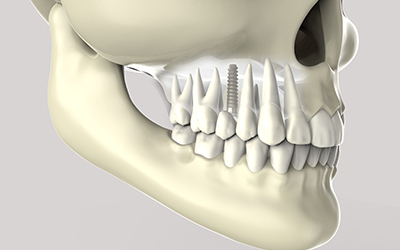Posted on Nov 24, 2025
File ID 85845038 | © Anton Pogarskyi | Dreamstime.com

The temporomandibular joint (TMJ) is one of the most complex joints in the human body, connecting the jawbone to the skull and allowing for essential functions like chewing, speaking, and yawning. When this joint becomes inflamed or misaligned, it can lead to TMD, or temporomandibular joint disorder—a condition that affects millions of adults each year. For patients seeking family dental care near me, understanding TMJ disorder is key to finding relief and restoring comfort in everyday life.
Common symptoms of TMD include jaw pain or stiffness, clicking or popping sounds when opening the mouth, facial soreness, earaches, headaches, and even difficulty chewing. In some cases, the pain radiates to the neck and shoulders, creating widespread discomfort. These symptoms can appear suddenly after trauma or gradually due to chronic habits like teeth grinding or jaw clenching.
Several factors contribute to the development of TMD, many of which are closely related to dental health and alignment. Common causes include:
As part of cosmetic and family dentistry, dentists can evaluate these underlying causes to provide targeted treatments that address both function and appearance.
Accurate diagnosis is essential for developing an effective treatment plan. During an evaluation, a cosmetic and family dentistry team will typically:
This thorough diagnostic approach helps determine whether the source of discomfort lies within the joint itself or stems from surrounding muscles and tissues. For patients searching for family dental care near me, finding a practice that offers comprehensive diagnostic technology is an important step toward long-term relief.
Treatment for TMD depends on its severity and underlying cause. In many cases, non-invasive options provide significant improvement without the need for surgery. Common treatments include:
For patients whose TMD is linked to poor bite alignment or tooth wear, restorative dentistry and bite correction may be recommended. These treatments can help restore natural jaw motion and improve overall oral health.
In severe cases, surgical procedures such as arthrocentesis or joint replacement might be considered, but these are typically reserved for cases that do not respond to conservative therapy.
Preventing TMD often starts with consistent, proactive dental habits. Regular visits to a cosmetic and family dentistry practice help identify early signs of bite issues, tooth grinding, or jaw tension before they progress into more serious problems. Dentists may also recommend custom night guards, relaxation exercises, and posture correction to support optimal jaw alignment.
Additional prevention tips include:
Patients looking for family dental care near me should choose a practice that offers personalized education and long-term support for maintaining jaw and dental health.
Living with TMD can significantly affect daily comfort, sleep quality, and even emotional well-being. Fortunately, with professional care from a dedicated cosmetic and family dentistry team, most patients experience lasting relief and improved function. Addressing TMJ issues early not only alleviates discomfort but also enhances smile aesthetics and overall confidence.
By seeking qualified family dental care near me, patients can receive customized, compassionate treatment plans that restore harmony between the teeth, jaw, and muscles—leading to a healthier, pain-free smile.